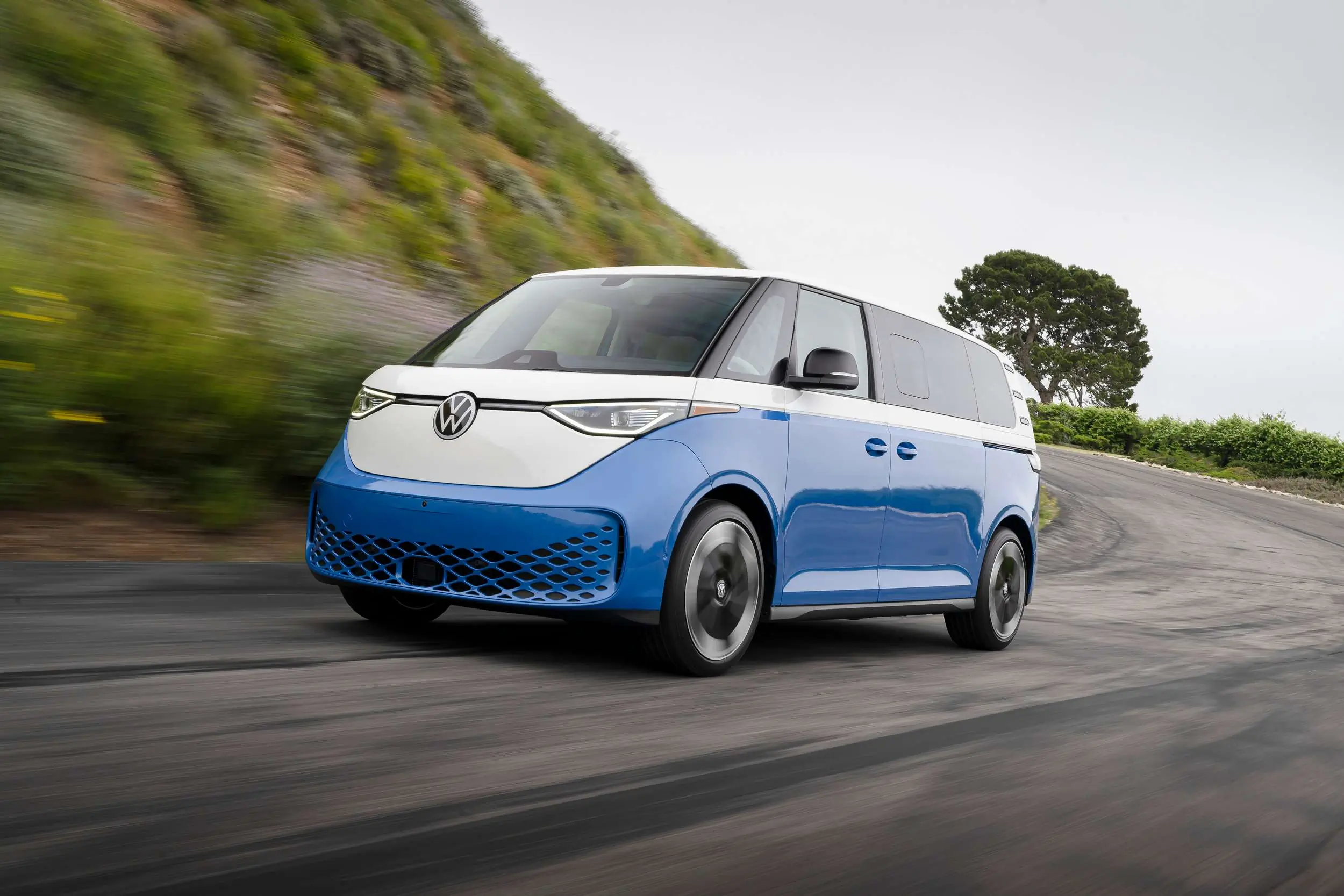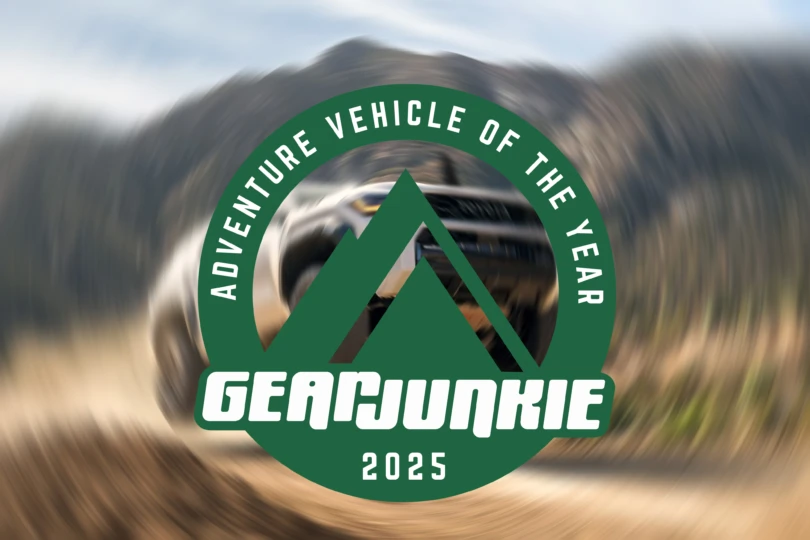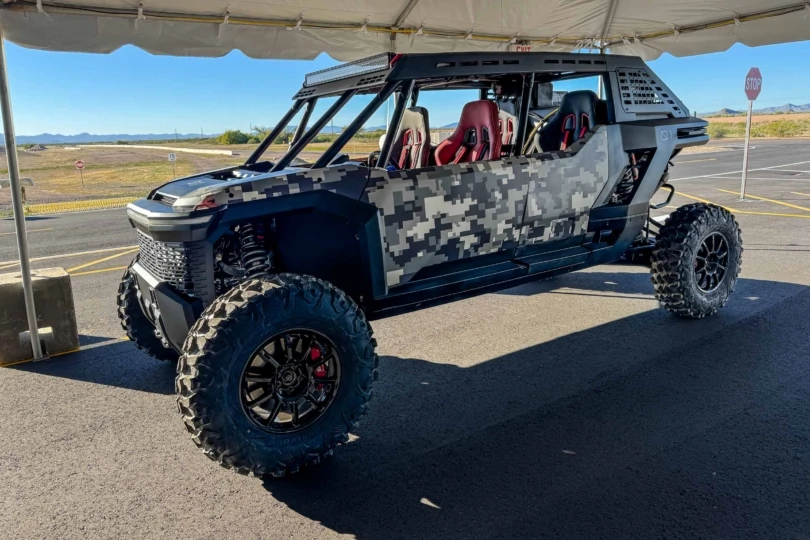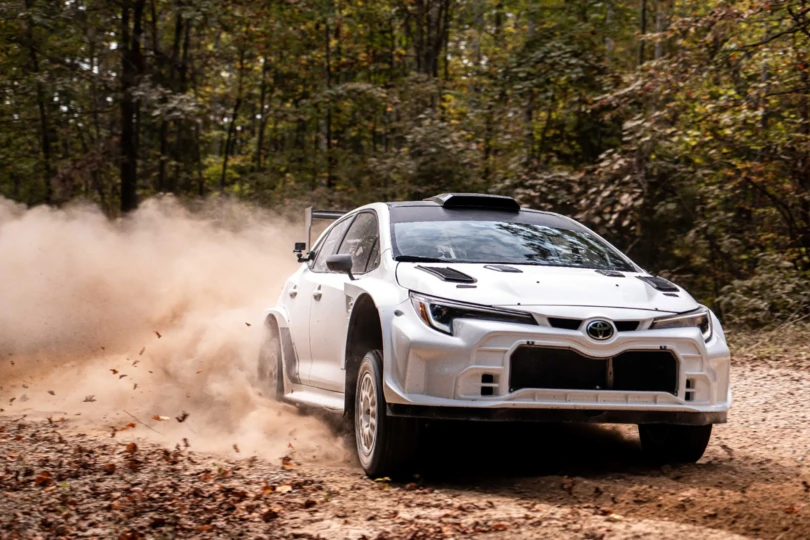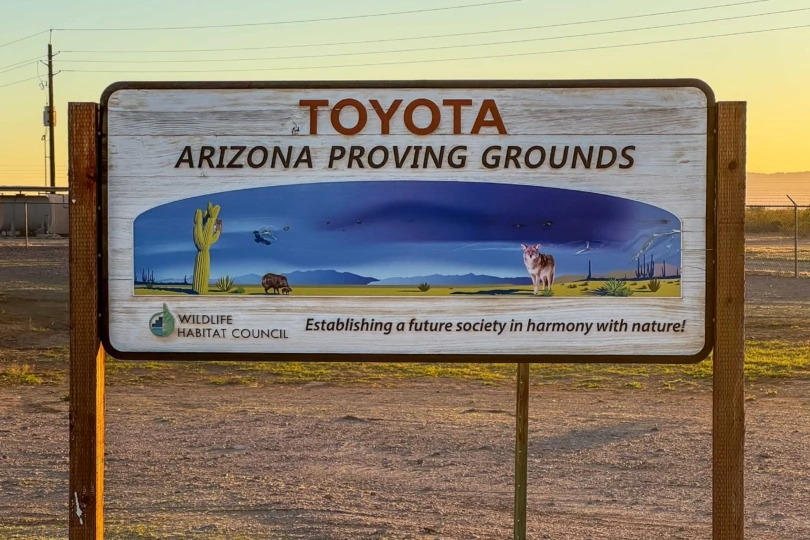Volkswagen has finally revealed the long-awaited North American version of its electric ID. Buzz. The American reimagining of the classic Microbus is longer, with a third row of seats, a more powerful motor, and a higher-capacity battery.
It’s been 8 years since Volkswagen first showed off the concept for the electric retro Buzz. In August 2017, the Buzz was confirmed for production. Yet, VW has kept everyone waiting. In the U.S. and Canada, it’s even been an extra year since the short-wheelbase model went on sale in the rest of the world. But it’s finally almost here.
Bigger Buzz for Bigger Adventures
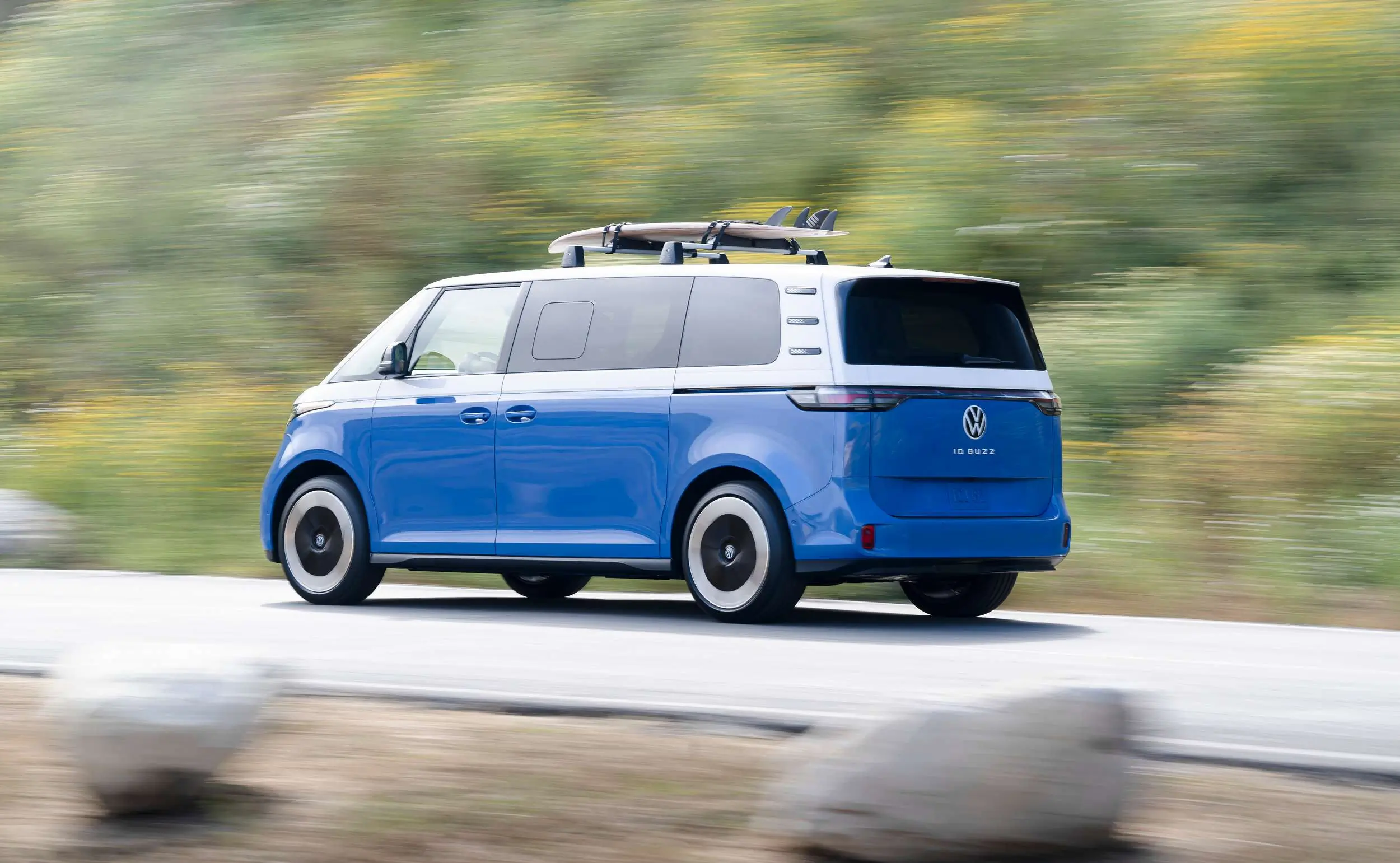
At 117.6 inches, the 2025 Volkswagen ID. Buzz for North America has an extra 10 inches of wheelbase. That makes it 194.4 inches long overall, the same 10 inches over the two-row Buzz.
The ID. Buzz is as wide as a Volkswagen Atlas big crossover and 10 inches shorter. It’s almost 30 inches longer than the original, but it keeps the ultrashort overhangs and boxy shape of that classic VW bus.
Volkswagen didn’t give a cargo capacity figure for the ID. Buzz at launch. But the Euro short-wheelbase version’s boxy cabin can hold about 78 cubic feet of stuff. Expect our Buzz to be into the 90s. The second and third rows fold flat, with an available Flexboard making for a completely flat floor. The third row can also be removed completely.
More Power, New AWD
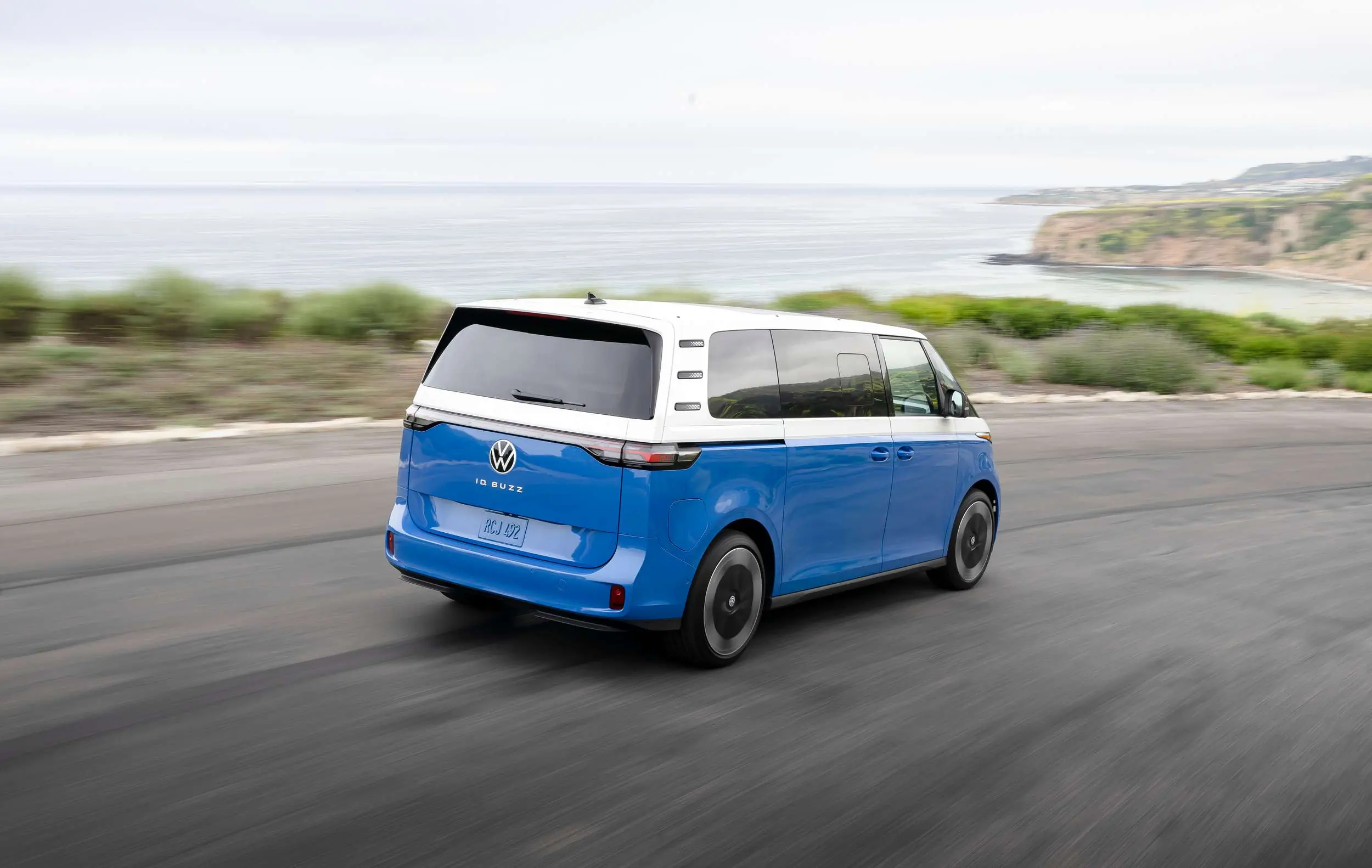
Also like the original Type 2 Bus, the ID. Buzz has its motor in the back. The Type 2 launched with a 24-horsepower air-cooled four-cylinder, but the ID. Buzz gets 282 horsepower and 406 pound-feet of torque from an electric motor.
The motor is Volkswagen’s latest, and it is a permanent magnet synchronous design. A new stator with more wiring turns and a water-cooling jacket help make it more powerful and more efficient. There is a one-speed transmission and VW’s latest power electronics work to maximize how the battery’s power is used.
It’s longer and more powerful, so this ID. Buzz gets more battery capacity. The pack is 91 KWh, up 9 KWh from the short-wheelbase Buzz. VW didn’t have a range estimate for the larger pack, but the Euro Buzz gets an estimated 258 miles from its 82KWh pack.
North America will also get all-wheel drive on the options list, something Europe doesn’t. Ticking the box for all-wheel drive adds a second motor in the front and brings power up to 330 horsepower. VW didn’t say how the power was split between the front and rear axles.
Loads of Standard Equipment
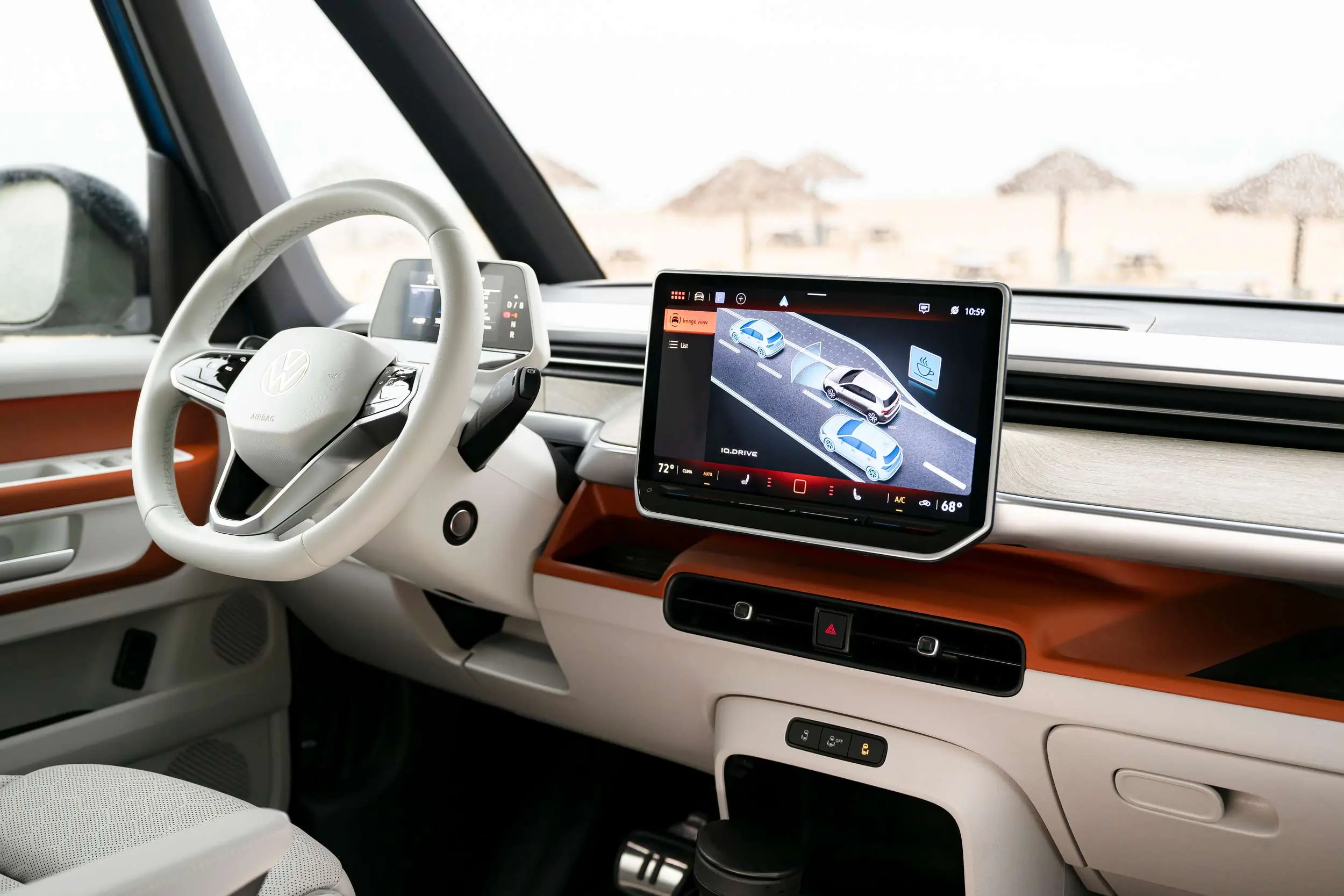



The 2025 Buzz has power sliding doors on both sides. It also has power windows inside the door glass in a unique window-in-window design. Volkswagen has added interior cooling vents for the second and third rows of seats, a feature not found on the shorter Euro model.
The Buzz comes standard with perforated leatherette seats. It’s going to be loaded up, with 12-way power driver and front passenger seats and seat heating and ventilation standard. A heated steering wheel is also part of the package.
There are some fun tech features in the Buzz, including the ID. Light strip that runs under the windshield. It uses light pulses and colors to show the driver information like navigation turns, ready status, and voice command feedback.
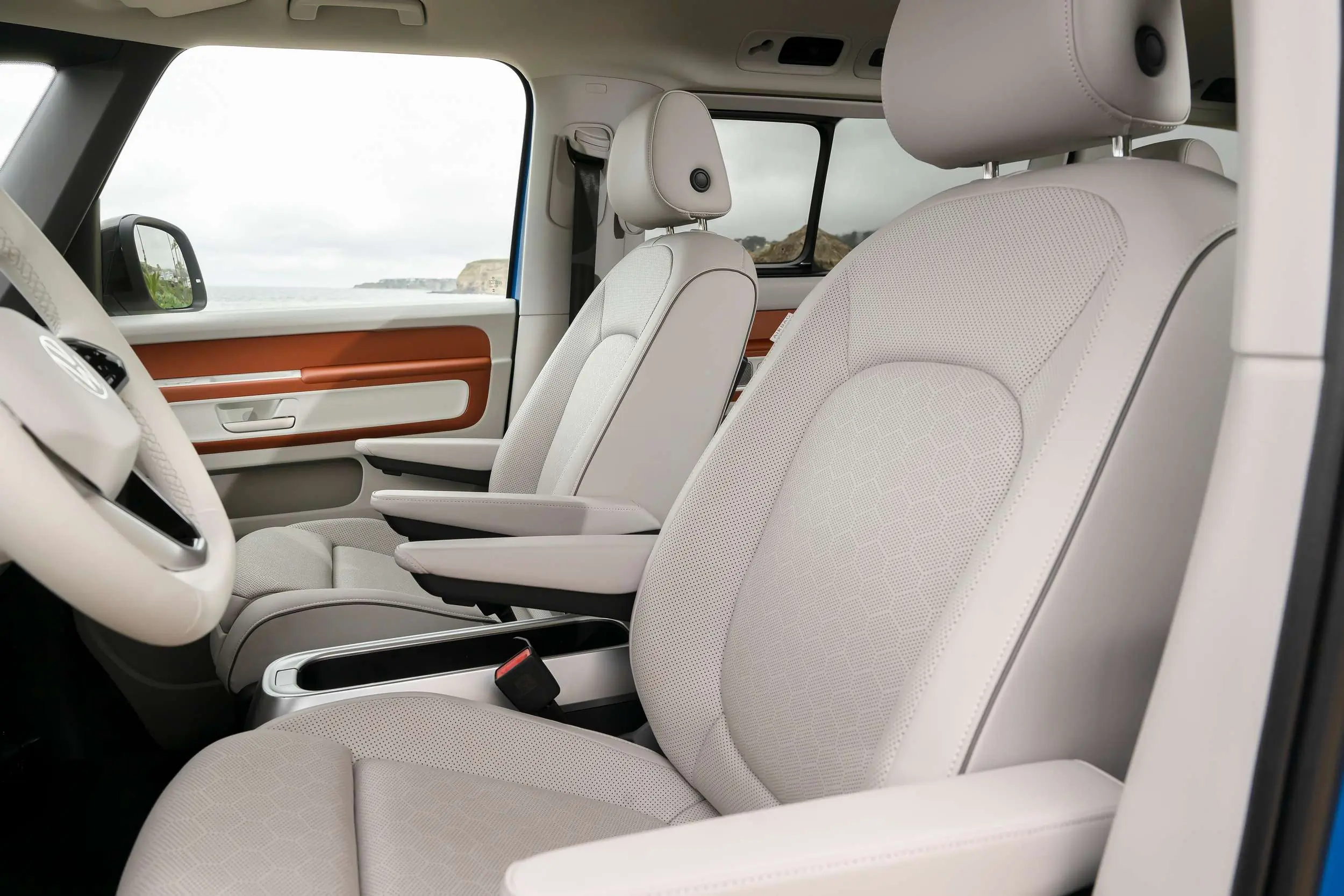



Also for the driver, the Buzz has a 5.3-inch digital dash display behind the wheel and a 12.9-inch center screen. Wireless App Connect and wireless phone charging are standard, and there are eight USB-C ports inside.
Driver assists will include IQ. Drive lane centering and capacitive touch steering wheel. The system can warn you about obstacles and has a dynamic road sign display. Park assist with remote parking will be optional.
Then there’s the optional sunroof. The 67- by 41-inch panel is massive and can be changed from clear to opaque through electrochromic tinting. A swipe of the finger is all it takes. Unfortunately, that means the glass roof can’t open.
2025 Volkswagen ID. Buzz Arrives Next Year
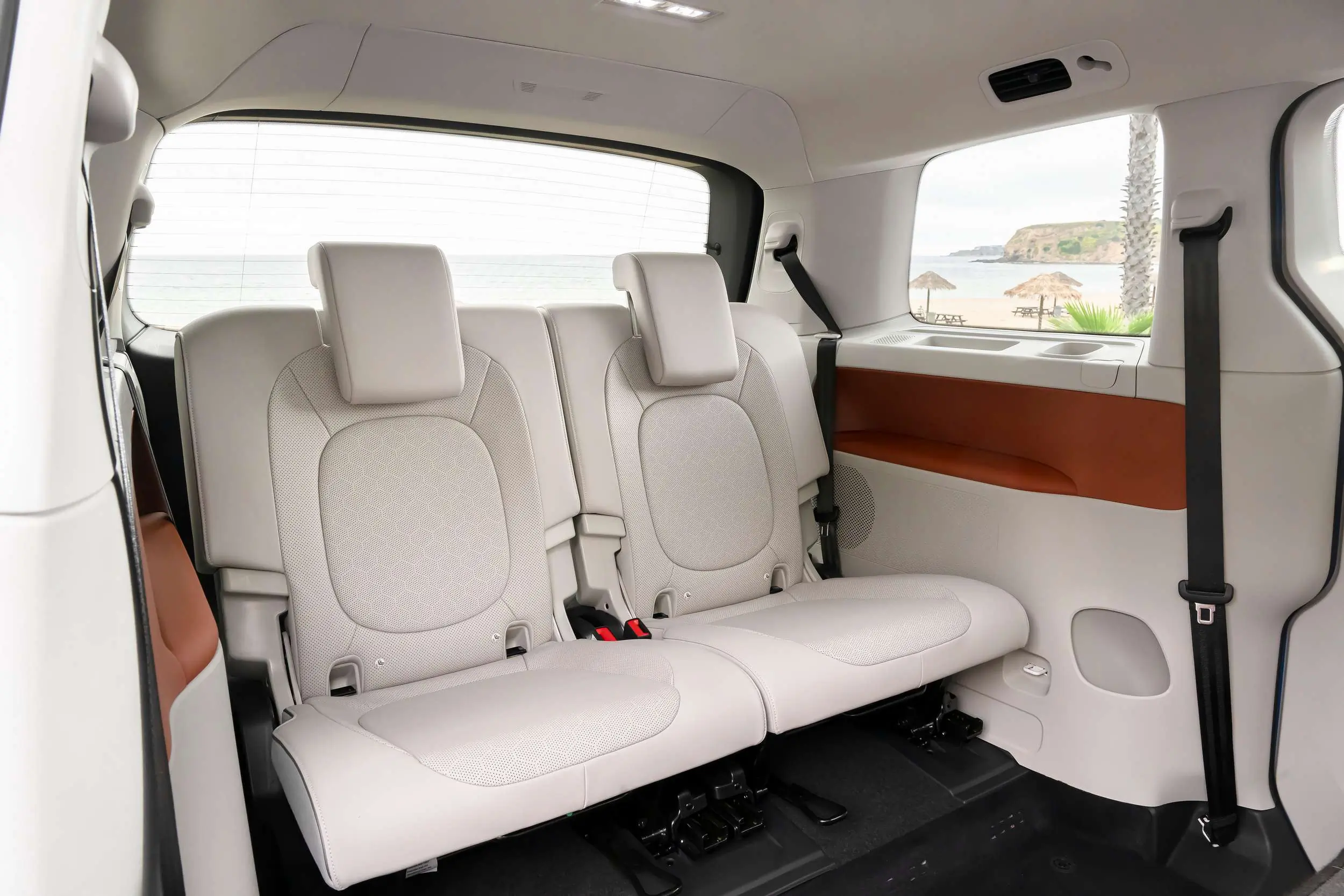



As you’ve probably guessed, the 2025 Volkswagen ID. Buzz won’t go on sale until next year. Volkswagen didn’t say exactly when it would hit dealers, but with the announcement today, it will likely be very early in 2024.
